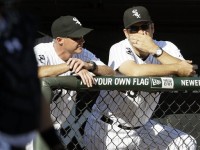Eric Campbell

All you need to know about tonight’s game is the Mets scored a franchise record 12 runs in the third inning. Here’s how it happened:
A 12-run inning? That’s the highest-scoring frame in @Mets history. https://t.co/mLUBSOeNVe pic.twitter.com/4eUVXnWN2U
— MLB Stats (@MLBStats) April 30, 2016
Watch @ynscspds cap off our 12-run inning with a grand slam! #Metshttps://t.co/0Z4NwYW4Gb
— New York Mets (@Mets) April 30, 2016
As Ron Darling would later say, “You got the feeling that the inning might not ever end.” This inning was a far cry from the 2015 Mets June/July offense. The Mets sent 15 batters to the plate. The only Mets batter that didn’t reach base or score at least once was pitcher Steven Matz. With his grand slam and six RBI, Yoenis Cespedes broke Butch Huskey‘s team record of five RBI in one inning. Who knew?
The inning was so impressive Jake Peavy‘s ERA went from 6.86 to 8.61. The Mets scored half their runs off Peavy and the other half off of sacrificial lamb Mike Broadway. His ERA went from 3.86 to 11.81.
Matz lasted six innings allowing seven hits, zero earned, three walks, and four strikeouts. It wasn’t a dominating performance. He only had one 1-2-3 inning. With that said, he more than got the job done. The only run scored by the Giants was a leadoff homerun on the seventh inning by Angel Pagan off of Jerry Blevins. It was a good decision by Terry Collins to give Blevins a full inning of work in a blowout. Blevins has been the least used member of the bullpen.
As if they were irritated by Pagan’s homer, the Mets rallied again in the seventh to score a run. The 13th run of the game was scored on a Juan Lagares RBI single. Logan Verrett pitched a scoreless eighth, and Antonio Bastardo pitched a scoreless ninth to close out the 13-1 victory. I’m assuming Verrett, the long man in the pen, didn’t pitch two innings because Terry Collins’ Magic 8 Ball told him to do it.
This was the Mets first game this season against a National League team that was expected to be a contender for not only the postseason, but also the World Series.
Game Notes: Kevin Plawecki threw out Brandon Belt in the second. He’s now 5-9 in throwing out would be basestealers. Since taking over for the injured Travis d’Arnaud, he’s gone 2-13. David Wright, who for some reason wasn’t pulled, continued his throwing issues with a throwing error in the eighth. Eric Campbell entered the game to play LF in the eighth. Michael Fulmer made his debut for the Tigers against the Twins. He went five innings allowing two earned, one walk, and four strikeouts.
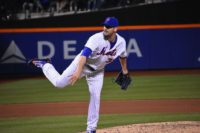
With the Mets recent winning streak and just overall better play, the only issue was Matt Harvey‘s slow start and his mechanics. Four pitches into the game, Zack Cozart hit a homerun. Ivan DeJesus followed with a single. It looked like Harvey was going to struggle again.
Then the Harvey of old emerged. He struck out the next five batters and retired six straight. His fastball was topping 97 MPH. The Reds would cease making hard contact against him. As impressive as that was, the third inning was all the more impressive.
The bases were loaded with one out after two soft singles and a Neil Walker error. Harvey then struck out Eugenio Suarez, and he got Devin Mesoraco out on a soft liner up the middle. Walker made a nice diving play up the middle there to redeem himself after his earlier error. Walker would then redeem himself in the bottom of the third:
9 for Neil! @NeilWalker18 hit his 9th HR of the season. That ties a #Mets record for the most HRs in April. pic.twitter.com/zCIf1andLQ
— New York Mets (@Mets) April 28, 2016
Walker’s homerun would put the Mets up 3-1. The other two runs were scored in the first. Alejandro De Aza, starting in place of Curtis Granderson, scored an unearned run when Lucas Duda reached on a two base error. Duda scored on a Walker RBI single.
Harvey ran into trouble again in the fifth. The Reds hit two infield singles leading to a run scored making it a 3-2 game. Harvey then induced Mesoraco to hit into an inning ending double play. At this point, Terry Collins would’ve been justified pulling Harvey there. He was in line for the win. The defense behind him was sloppy all night. Harvey hasn’t been good so far this year in the sixth. Instead, Collins sent him back out there. He might have had to with a somewhat taxed back end of the bullpen.
Harvey rewarded Collins’ faith by getting a 1-2-3 inning. Harvey’s final line was six innings, seven hits, two earned, one walk, and seven strikeouts. He threw 102 pitches. Most importantly, he got the win. Now, Harvey may not be all the way back yet, but he took an important step. It’s definitely a game to build on.
In the bottom of the sixth, the Mets blew it open against the Reds dreadful bullpen. Eric Campbell, pinch hitting for Harvey, drew a walk. De Aza followed with a walk of his own. Michael Conforto then stepped up to the plate. What was strange was in a 3-2 game with two outs in the inning, the Reds didn’t turn to a lefty. They paid for it when Conforto hit opposite field double to left-center. It was Conforto’s ninth double in 18 games played.
Jim Henderson came on for Harvey in the seventh because it was the seventh inning. He had a 1-2-3 inning with two strikeouts. After Collins’ earlier overuse of him, it appears Henderson is settling back in. Hansel Robles pitched the eighth inning (as he should). He too pitched a 1-2-3 inning with two strikeouts. That’s 15 strikeouts in ten innings pitched for Robles this year. Addison Reed, pitching for the fifth time in six games, pitched the ninth and recorded his first save of the year. He also recorded a 1-2-3 inning except he only had one strikeout. Mets pitching had 12 strikeouts in total.
The Mets have now won six in a row and 11 of their last 13. Shockingly, this was the Mets first series win at home this season. Now after the easy stretch is over, the Mets have tomorrow off (because it’s a Thursday in April), and they welcome the Giants for a weekend series.
Game Notes: In 12 of the Mets 20 games, they have struck out 10+ batters. Yoenis Cespedes was given another night off with his leg contusion despite hitting a homerun last night. Granderson was just given the day to rest. De Aza started in right with Juan Lagares in center.
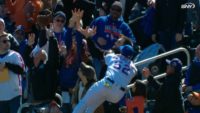
Last year, the Mets saw lengthy absences from David Wright and Travis d’Arnaud. Daniel Murphy and Michael Cuddyer were nicked up most of the year. Other Mets players got bumps and bruises along the way. The Mets depth got tested early and often in 2015, and it was ugly.
Dilson Herrera and Kevin Plawecki showed they weren’t ready to hit major league pitching. For his part, Plawecki had to stay in the lineup because Anthony Recker and Johnny Monell weren’t either. Eric Campbell and John Mayberry, Jr. showed why they weren’t everyday players, let alone middle of the order bats. There were other forgettable debuts from players like Darrell Ceciliani and Danny Muno. In 2015, the Mets bet against their farm system, and it nearly cost them the season.
In the offseason, the Mets made sure to build a deeper roster. They moved Wilmer Flores to a utility role. Alejandro De Aza is here as a fifth outfielder. Juan Lagares is a part time player who will start against lefties and come on as a late defensive replacement. Herrera is back in AAA where he belongs for now. Campbell and Plawecki are on the 25 man roster, but they are asked to do much less. Hypothetically, it’s a much deeper team.
Well, that hypothesis is now being put to the test.
Yoenis Cespedes has been dealing with a thigh issue due to his jumping in the stands and an awkward slide. As for now, he’s not DL bound. Yesterday, d’Arnaud left the game early with pain in his throwing shoulder. While he may not have been the best at throwing out would be base stealers, his throws were uncharacteristically poor. He will be examined today before a DL decision is made. Whether it will be one day, one week, one month, or more, the Mets will miss Cespedes and d’Arnaud.
No matter how much time if will be, this Mets team is better built to sustain these losses. Having a De Aza/Lagares platoon is a much better option than Ceciliani. Plawecki has another year of development under his belt. Hopefully, this translates to him having a better year at the plate.
The Mets better hope so. The Nationals look like a different team than they were a year ago. The Mets aren’t going to be able to coast for two – three months with subpar players. This is a new year. Fortunately, this is a new Mets team that’s built for just these types of situations.
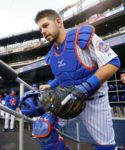
There are a number of ways to analyze Travis d’Arnaud‘s shoulder problems. It can be used as another example of the narrative that he’s injury prone. It could be used to explain his poor start at the plate. It could be used to explain why the Reds were 5/5 in stolen base attempts on Monday.
It can also be seen as another opportunity for Kevin Plawecki.
Plawecki had that chance last year, and he couldn’t take advantage. He hit .219/.280/.296 with three homers and 21 RBI. His OPS+ was 63, and his wRC+ was 60. It was about as ugly an offensive year as you could’ve had. To put it in perspective, Eric Campbell had a higher OPS+ and wRC+. You know it’s been a tough year at the plate when Campbell was the better hitter.
Now, there were valid reasons for his struggles. First, he had no protection in that lineup. The aforementioned Campbell was at one time a middle of the order bat. Second, he might not have been ready. He had played less than one season’s worth of games in AAA. Finally, he had some health issues. He had offseason sinus surgery to help alleviate the dry spells he experienced during games last year.
Whatever the reason, he struggled mightily. He was once seen as someone who could push d’Arnaud for playing time last year. Instead, his 2015 showed that d’Arnaud was clearly the better player. The Mets could’ve opted to start him in AAA this year to help his development, but ultimately, the team decided it was better to have him as a backup catcher.
Now, depending on the severity of d’Arnaud’s shoulder, Plawecki is going to get a second chance to show the Mets he can be the team’s primary catcher. He can show them he can be the .290/.364/.432 hitter he was in the minors. He has an opportunity to show his poor 2015 offensive numbers were driven by a low .277 BABIP. He can show the team he’s every bit the pitch framer d’Arnaud is. He can show the Mets he’s more durable. Possibly, Plawecki can show he’s a better player and Wally Pipp d’Arnaud in the process.
Plawecki is getting that all too valuable second chance to show the Mets he can be every bit the player they thought he was and more. He’s getting a chance to show the world what how good a ballplayer he really is. In essence, he’s getting a chance to show everyone he is better than d’Arnaud.
This time he’s in a much better lineup. He has major league playing experience. He’s had surgery to alleviate the dizzy spells. He’s out of excuses. This is his chance, and he needs to take full advantage of it.
Editor’s Note: this article was also published on metsmerizedonline.com
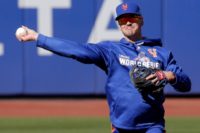
Due to the stress Jacob deGrom‘s injury and Steven Matz‘s short start out on the bullpen, the Mets were forced to call-up Rafael Montero to add a fresh arm to the bullpen. Rather than out deGrom on the DL or demote another pitcher, the Mets sent down Eric Campbell. Even with deGrom looking more and more like he will miss his next start, the Mets still won’t put him on the DL. Essentially, the Mets robbed Peter to pay Paul.
With a weekend Interleague series in Cleveland, the Mets can get away with a short bench. While it does limit their ability to pinch hit and make defensive substitutions, they should be able to navigate the situation because they won’t have to pinch hit for a pitcher. However, come Monday, they’re back to playing National League ball, and they’re going to need a full bench.
Whatever your feelings on Campbell is, he’s not going to be eligible to be recalled. Unless deGrom (or someone else) goes on the DL, Campbell will have to spend 10 days in the minors. Looking over the Mets 40 man roster, there would be three eligible candidates: Dilson Herrera, Matt Reynolds, and Brandon Nimmo. Now with one extra spot left on the 40 man roster due to Zack Wheeler being on the 60 day DL, the Mets could recall another player like a Ty Kelly.
In reality, the decision is between Reynolds and Kelly. Nimmo isn’t quite ready, and even if he was, the last thing the Mets need is another outfielder. Herrera still hasn’t started playing games in the field yet due to a sore shoulder, and even if he has been, the Mets see him as the second baseman of the future. They’re not wasting service and development time for him to be on the bench.
Kelly is 27 years old, and he has yet to play in the majors. He plays second, third, and the corner outfield positions. He’s a very disciplined hitter, who is extremely selective at the plate. For reasons that aren’t completely clear, he’s spent five seasons in Triple-A, and he’s never played a major league game. Overall, the truth really is Triple-A is his ceiling. At best, he’s a AAAA player.
Even if that assessment was wrong, it’s still not time to call-up Kelly. First, the Mets would have to add him to the 40 man roster and would not be able to denote him unless he clears waivers. Additionally, his skill set doesn’t match what this team needs. There’s no room for him in the outfield. Terry Collins is going to play Neil Walker almost everyday. So in essence, while Kelly has some versatility, the positions he plays do not match the Mets’ needs.
Accordingly, Reynolds is the player the Mets need to recall. During Spring Training and this early minor league season, Reynolds has played every infield position but first. His addition to the major league roster would create more flexibility across the infield. It would permit Collins to sit both Asdrubal Cabrera and Lucas Duda in the same game. Additionally, it would permit Collins to double switch with any player with the full knowledge that there’s another player on the bench who is fully capable of playing any position should another double switch be needed or there was an injury.
Offensively, Reynolds is a right hand batter who profiles better at the next level than Kelly. He’s not as patient as Kelly, but then again no one is. Reynolds profiles as a gap to gap line drive hitter. He does have more pop in his bat than Kelly. More importantly, at the very least, Reynolds projects as a bench player.
If Reynolds is going to wear a Mets uniform past smiling and waiving before Game One of the NLCS, he’s going to be a super-utility man in the mold of Flores or Joe McEwing. Reynolds has worked hard at it during the offseason and Spring. He knows this is his future, and he’s fully embraced it.
Better yet, he’s scorching hot right now. He’s hitting .353/.476/.529 with a homerun in five games. In those fives games, he’s played second, third, and short. At this point the only plausible reason for not calling up Reynolds is the Mets want to have a short bench.
Reynolds has earned his shot, and he’s playing well. It’s time for the Mets to call-up Reynolds.

During Spring Training, Travis Taijeron introduced himself to many Mets fans by hitting .368/.432/.658 with two homeruns and 11 RBI. He played so well he was awarded the John J. Murphy Award, which is given to the top rookie in his first ever Spring Training.
It’s somewhat ironic that Taijeron wins that award as the 27 year old’s chances of ever playing for the New York Mets dwindle by the day.
In Taijeron’s major league career, he has only played the outfield. As Mets fans already know, the major league club is saturated with outfielders. In fact, the Mets have two major league caliber starters, Juan Lagares and Alejandro De Aza, as reserves. The Mets major league depth, and the fact that Taijeron is not on the 40 man roster makes it highly unlikely he will get called up to the majors either this year or in subsequent years.
No, in order for Taijeron to put himself into position to ever be called up to the majors, he’s going to have to become a more versatile player. It’s what the Mets are working on now with Taijeron’s AAA teammate Matt Reynolds. It’s a big reason why Eric Campbell made the Opening Day roster. In his short major league career, Campbell has played every position but pitcher, catcher, and centerfield. By the way, Campbell has worked at being capable enough behind the plate to become an emergency catcher.
So, if Taijeron ever wants to play in the majors, he’s got to pick up a first baseman’s mitt. He has to work on the position whenever he can. He needs to show the Mets organization that he is more than just an outfielder. He needs to show them he can be a versatile part of a major league bench. These are the types of things a 27 year old minor league player, who was drafted in the 18th round, needs to do.
Fortunately for him, if he becomes proficient. The Mets have no prospect standing in his way from playing some AAA games at first. The current AAA first baseman is Marc Krauss, who is nothing more than minor league depth. He’s a career .187/.255/.324 major league hitter. There is no scenario in which he ever plays for the Mets.
However, with the way Taijeron hits, he could play in the majors. Last year in AAA, he hit .274/.393/.536 with 25 homeruns and 71 RBI. His season was good enough to earn him an invitation to Spring Training where he made the most of his opportunities. He showed the Mets he has pop in his bat, and he can play the outfield well. Now, he just has to show them he can play one other position.
The Mets organization has some interest in seeing Taijeron play first base. It would permit Reynolds to play some outfield as he tries to become more versatile himself. With respect to Taijeron, the Mets could have a bench bat that can draw walks and hit for some power. As such, putting Taijeron at first would permit the Mets to extract the most value possible out of two prospects. Therefore, allowing Taijeron to play first would be in the Mets’ best interests.
Taijeron has real talent, which may or may not translate to the majors. However, we will never know if it could unless he makes himself versatile enough for the Mets to call him up to the majors. It’s time for Taijeron to put on a first baseman’s mitt.
Editor’s Note: this first appeared on metsminors.net

After the Mets bullpen had to pitch 7.1 innings on Monday with Steven Matz‘s terrible start, and Logan Verrett having to come out of the bullpen to start in place of Jacob deGrom, the Mets were forced to make a move to add a pitcher to the roster.
There were plenty of good options available to them.
The Mets could’ve utilized deGrom’s paternity leave and called up Rafael Montero. However, the Mets didn’t want to do that because they then couldn’t backdate a potential deGrom DL stint to last Saturday. The Mets could’ve just placed deGrom on the DL, but for some reason they do not appear ready to do that. Apparently, that April 19th game against the Phillies is a must win, and you need deGrom to pitch in that game if at all possible.
No, the Mets decided to demote a player. Looking over the roster, the only pitcher who realistically could be demoted is Hansel Robles. He seems like a natural choice as he pitched 2.2 innings on Monday, and he could use an extra day or two. If Montero falters, the Mets could recall Erik Goeddel or Sean Gilmartin to take his place on the roster.
In this scenario, Robles would have to stay in the minors for 10 days unless the Mets put deGrom (or someone else) on the DL. Given Robles’ current role, losing him for 10 days would be palatable. Montero, Goeddel, or Gilmartin could easily be the long man and/or last man in the bullpen.
Instead of the Mets following the reasonable course of action, they determined it was in their best interests to demote Eric Campbell. In essence, the Mets decided to go with the worst possible choice.
Now,there is nothing wrong per se with demoting Campbell. He’s a career .230/.315/.325 hitter. He has good attributes as a player, but nothing that Campbell has done in his career would ever prevent him from being demoted. However, if he’s being demoted, it should be because the Mets are calling up another position player like Matt Reynolds, not because they are adding a pitcher to the roster.
The Mets demoting Campbell for Montero shortens the Mets bench. In a world where you have David Wright on your team, you should never shorten your bench. On any given day, Wright can wake up sore and not be ready to play. If that happens, not only are you down another player, but you also have no infielders on your bench.
By the way, the Mets are playing a day game after a night game. Terry Collins has said there’s no hard-and-fast rule stating Wright must sit a day game after a night game. However, it’s also true that the Mets have so far refrained from playing Wright in a day game after a night game. No one knows how his back will respond to it. No one knows if he will be able to get loose in time to play a full nine innings.
Instead of taking this into account, the Mets thought it would be best to potentially have no infielders on the bench. The Mets thought it would be best to realistically only have two options on the bench for Wednesday’s game (Collins is loathe to pinch hit with his catcher). Also, apparently, the Mets do not foresee the need to have more than two pinch hitters available in a game where the starting pitcher hasn’t pitched in almost a month and wasn’t stretched out in Spring Training. No, the Mets are setting forth a gameplan where they will have Verrett go deep in the game, and they will be alright with just two bench players. What could go wrong?
The Mets are in the midst of a four game losing streak and would rather potentially sacrifice the the last game of the homestand to give themselves the best possible shot of winning a game against a terrible Phillies team in Philadelphia. The Mets apparently didn’t learn their lesson on Monday about the perils of having a shortened roster.
Overall, the Mets put themselves in a tough position all because they’ve deemed an April game in Philadelphia a must win. Why else wouldn’t you put an injured pitcher who is already missing a start and bullpen sessions on the DL?
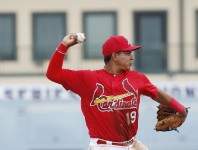
When Ruben Tejada was tendered a contract, I agreed with the move. When the Mets released him, I understood the move. He was taking up a spot on the 40 man roster, and there were important roster decisions to make. Now that Spring Training is over, and the roster is set, I don’t understand the Mets thought process.
Heading into the season, the Mets placed Zack Wheeler on the 60 day disabled list. This frees up a spot on the 40 man roster until such time as Wheeler is back and ready to play. This move coupled with Tejada’s release gave the Mets two open spots on the 40 man roster. With Jim Henderson making the team that leaves one open spot on the 40 man roster. That spot has gone unfulfilled.
The Mets could’ve used it to acquire a backup catcher. Rene Rivera, a strong defensive catcher, is a free agent. The Mets decided to bring back Johnny Monell on a minor league deal despite a tough 2015 season. Apparently, the Mets weren’t happy with their choices or with the choices available because they put Kevin Plawecki on the Opening Day roster. Rather than them using the last spot on the 40 man roster, the Mets decided to allow Plawecki reach Super Two status. They are gambling with hindering Plawecki’s development by not getting him regular playing time.
They are also relying on Wilmer Flores being the primary backup to all four infield positions. They are hoping Eric Campbell can be a good bench player like the front office has always imagined he could be. They are hoping that if he falters, or there is an injury, Matt Reynolds could fill-in. They are taking this risk despite Reynolds not having an obvious position to play in AAA with the presence of Dilson Herrera and Gavin Cecchini.
The Mets knew Tejada could adequately play second, third, and short. His presence could’ve allowed the Mets to let Flores get more time at first and third. For reasons now unknown, the Mets decided not to go this way. The Mets decided not to go with a bona fide major league caliber player to be a utility player even though Tejada arguably had the best year of his career when he started the year as a utility player in 2015.
Instead, the Mets let Tejada go to another National League team. If not for his recent injury, he would be helping the Cardinals try to win a World Series. There was a spot for him to do that with the Mets. Instead, the Mets have decided to let that last 40 man roster spot go to waste.
Upon reflection, the only reason it makes sense for the Mets to release Tejada and for them not to add another catcher is money. By cutting Tejada when they did, the Mets saved about $2.5 million.
The Mets are making cost cutting moves that harms the team’s depth despite tickets sales being much better than the Mets thought it would be. The Mets are paring down payroll despite the Mets slightly raising ticket prices.
Yes, the Mets went out and spent the money on Yoenis Cespedes. Yes, the payroll is more commensurate with what a contending team’s payroll should be. However, releasing Tejada is an unnecessary mickle and dime maneuver. He was depth. After last year’s rash of injuries, you would think the Mets wouldn’t take that lightly. He wasn’t taking anyone’s spot on the roster. In fact, they’re not even using all the spots available to them on the roster.
Hopefully, the Mets season doesn’t come down to a $2.5 million decision the team made in March.
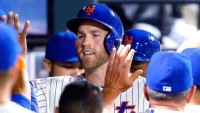
Right now, the Mets have to pick between Eric Campbell and Matt Reynolds for the last spot on the bench. It seems that Terry Collins tipped his hand as to who he thinks will win this competition:
Terry may have tipped his hand today (not that it's a stunner). Said team can put Campbell in right field for Granderson vs. LHP.
— Matt Ehalt (@MattEhalt) March 29, 2016
That’s right. Collins envisions Eric Campbell as part of his bench. He sees Campbell as someone who can allow Curtis Granderson to sit against tough lefties. It’s probable that Collins also sees Campbell as an option to get some time at first base to allow Lucas Duda to get a day off against a tough lefty. Given his history, Campbell can play the corner infield and outfield positions, second base, and in an emergency, shortstop and catcher.
If nothing else, Campbell is versatile. Unlike Wilmer Flores, Campbell has actually played a major league game at first base. Keep in mind no matter how good he has looked there, Flores has only played two Spring Training games at first base. Furthermore, Flores will be needed to backup second base and shortstop. More importantly, Flores is the main backup at third base. When no one knows how many games David Wright will be able to play in 2016, it’s imperative the Mets have a versatile backup.
Right now, that isn’t Matt Reynolds. In his minor league career, Reynolds has played 350 games at shortstop and 32 games at second base. He has no minor league experience at first, third, or the outfield. Therefore, as of right now, Campbell is the Mets best choice for the last man on the bench.
There are benefits to having Campbell on the bench. He’s a good pinch hitter hitting .293 with a .426 OBP. He gets big pinch hits. He doesn’t hurt you defensively at any position you put him. He’s also not going to complain when he’s not playing. He’s not going to disturb the clubhouse. Campbell knows he’s a bench player, and he’s just trying to do what he can to stick in the major leagues.
For right now, the Mets best option is to have Campbell start the year on the major league roster. Reynolds can go to AAA and learn other positions. Flores can focus on the middle infield and third. Campbell can continue to be a good pinch hitter who sparingly plays the corner infield and outfield positions when needed.
Terry Collins tipped his cap. He eluded that Campbell will make the team. It’s the right choice.
